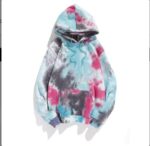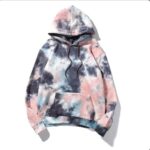
Sustainability – Eco-friendly fashion practices, materials, and initiatives.
As the fashion industry evolves, there is a growing demand for brands to adopt more eco-friendly and sustainable practices. Fast fashion and mass production have taken a toll on the environment, but the rise of conscious consumers has paved the way for a more sustainable future. In this post, we’ll explore some of the key eco-friendly practices, materials, and initiatives driving the shift towards a more ethical and responsible fashion industry.
1. Sustainable Materials
The choice of fabric is one of the most significant factors in creating sustainable fashion. Many brands are now opting for eco-friendly materials that reduce environmental impact. Here are a few examples:
Organic Cotton: Grown without harmful pesticides and synthetic fertilizers, organic cotton uses less water and energy, making it a more sustainable alternative to conventional cotton.
Recycled Fabrics: Many brands are turning to recycled materials like recycled polyester and nylon, made from post-consumer waste, such as plastic bottles and discarded fishing nets. This practice helps reduce waste and lower the demand for virgin resources.
Tencel/Lyocell: Made from wood pulp, this biodegradable fabric is known for its softness and breathability. The production process uses fewer chemicals and water, making it a more sustainable option.
Hemp: As one of the most eco-friendly crops, hemp requires minimal water, grows quickly, and improves soil health. It’s a versatile, durable fabric that is gaining popularity in sustainable fashion.
Bamboo: Bamboo is a fast-growing plant that requires little water and no pesticides, making it a renewable resource. When processed responsibly, it can create soft, eco-friendly textiles.
2. Eco-Friendly Production Practices
Sustainable fashion isn’t just about materials; it’s also about how clothes are made. Brands adopting eco-friendly production practices focus on reducing waste, conserving energy, and using fewer harmful chemicals. Key practices include:
Zero-Waste Pattern Making: This technique involves designing clothing patterns in such a way that no fabric is wasted during the cutting process. This helps reduce the overall waste generated during production.
Water-Saving Techniques: The fashion industry is notoriously water-intensive, especially in processes like dyeing. Many eco-conscious brands are adopting water-saving techniques, such as closed-loop dyeing or using natural dyes derived from plants and minerals.
Ethical Labor Practices: Sustainability also extends to fair wages, safe working conditions, and ethical labor practices. Brands that prioritize these values ensure that their workers are treated with respect and dignity throughout the production process.
3. Circular Fashion
The concept of circular fashion focuses on extending the life cycle of clothing by promoting repair, reuse, and recycling. The goal is to reduce waste and create a closed-loop system where products are designed to last and be easily repurposed. Key initiatives in circular fashion include:
Clothing Recycling Programs: Many brands offer take-back programs that encourage customers to return old clothes, which are then recycled into new products or repurposed in creative ways.
Upcycling: Upcycling involves transforming old or discarded garments into new, higher-value pieces. This creative approach reduces waste and gives clothing a second life, often resulting in unique, one-of-a-kind items.
Resale and Thrift Markets: The rise of resale platforms and second-hand shopping has helped shift consumer behavior toward more sustainable buying habits. Thrift stores, vintage shops, and online resale platforms offer a more eco-friendly alternative to buying brand new.
4. Slow Fashion Movement
Unlike fast fashion, which focuses on mass-producing cheap, trendy items with short lifespans, slow fashion emphasizes quality, longevity, and thoughtful consumption. Slow fashion encourages consumers to buy fewer, better-quality pieces that can be worn and cherished for years to come. Key elements of slow fashion include:
Timeless Designs: Instead of chasing short-lived trends, slow fashion brands create timeless pieces that can be styled across seasons and years.
Quality Over Quantity: Investing in high-quality, durable pieces that withstand wear and tear reduces the need for constant replacements, contributing to a more sustainable wardrobe.
Conscious Consumerism: Slow fashion advocates for mindful shopping, urging consumers to think critically about their purchases and opt for sustainable, ethically produced clothing.
5. Sustainable Fashion Initiatives
In response to growing environmental concerns, many fashion brands and organizations have launched initiatives to promote sustainability:
The Fashion Pact: This global coalition of brands and companies is committed to reducing the fashion industry’s environmental impact. Members pledge to take concrete actions to protect the climate, restore biodiversity, and safeguard the oceans.
Fair Trade Fashion: Fair Trade certifications ensure that clothing is made under ethical working conditions, with fair wages and respect for workers’ rights. This initiative promotes transparency and fairness throughout the supply chain.
B Corporation Certification: Brands that achieve B Corp certification meet rigorous standards for social and environmental performance, accountability, and transparency. This certification helps consumers identify companies that prioritize sustainability.
How You Can Support Sustainable Fashion
Buy Less, Choose Well: Focus on investing in high-quality pieces that you truly love and that will last. Consider the material, production process, and the brand’s sustainability commitments before making a purchase.
Support Ethical Brands: Choose to shop from brands that prioritize sustainability and transparency in their production processes.
Take Care of Your Clothes: Extend the life of your clothing by taking proper care of it. Wash less frequently, follow care instructions, and repair items when needed rather than discarding them.
Thrift and Recycle: Embrace second-hand shopping and consider donating or recycling your clothes when you no longer need them.




